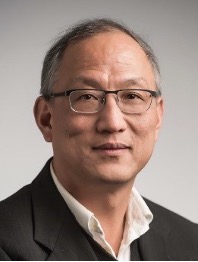Searching Stable Perovskite Solar Cell Materials
Using Materials Genome Techniques and
High-Throughput Calculations
Su-Huai Wei*
Beijing Computational Science Research Center, Beijing, 100193, China
ABSTRACT: The
solar cells based on the emerging organic-inorganic hybrid halide perovskite is
progressing rapidly in the last decade, but the commercialization of the perovskite solar cells still faces significant
challenges. The major issues are the poor long-term stability and toxicity. In
light of this, materials design and screening of novel stable perovskites is
becoming an important research direction. In contrast to conventional trail-and-error
processes, materials genome techniques and high-throughput
calculations have been prevalently applied in this area and accelerated
materials discovery. In this talk, I will present a review that summarizes our
recent progress in this field, mainly focusing on four classes of perovskites including AM2+X3 halide single
perovskites, AM4+Y3
chalcogenide single perovskites,
A2M+M3+X6
halide double perovskites and A2M3+M5+Y6
chalcogenide double perovskites. The stability, electronic, optical, and
defect properties of these materials in terms of their applications as solar
cell absorbers are discussed.
Keywords: Perovskite solar cells; Materials genome techniques; High-throughput calculations

Su-Huai Wei is a Professor at the Beijing Computational Science Research Center (CSRC). He received his B.S. in Physics from Fudan University in 1981 and Ph.D. from the College of William and Mary in 1985. He was a Laboratory Fellow and Manager of the Theoretical Materials Science Group at the National Renewable Energy Laboratory (NREL) in USA before he joined the CSRC in 2015. His research is focused on developing electronic structure theory of materials, especially for semiconductors and energy related materials and their related applications. He has published more than 500 papers in leading scientific journals, including more than 70 in Physical Review Letters with more than 56,000 citations and an H index > 117. He is a Fellow of both of the American Physical Society and the Materials Research Society.